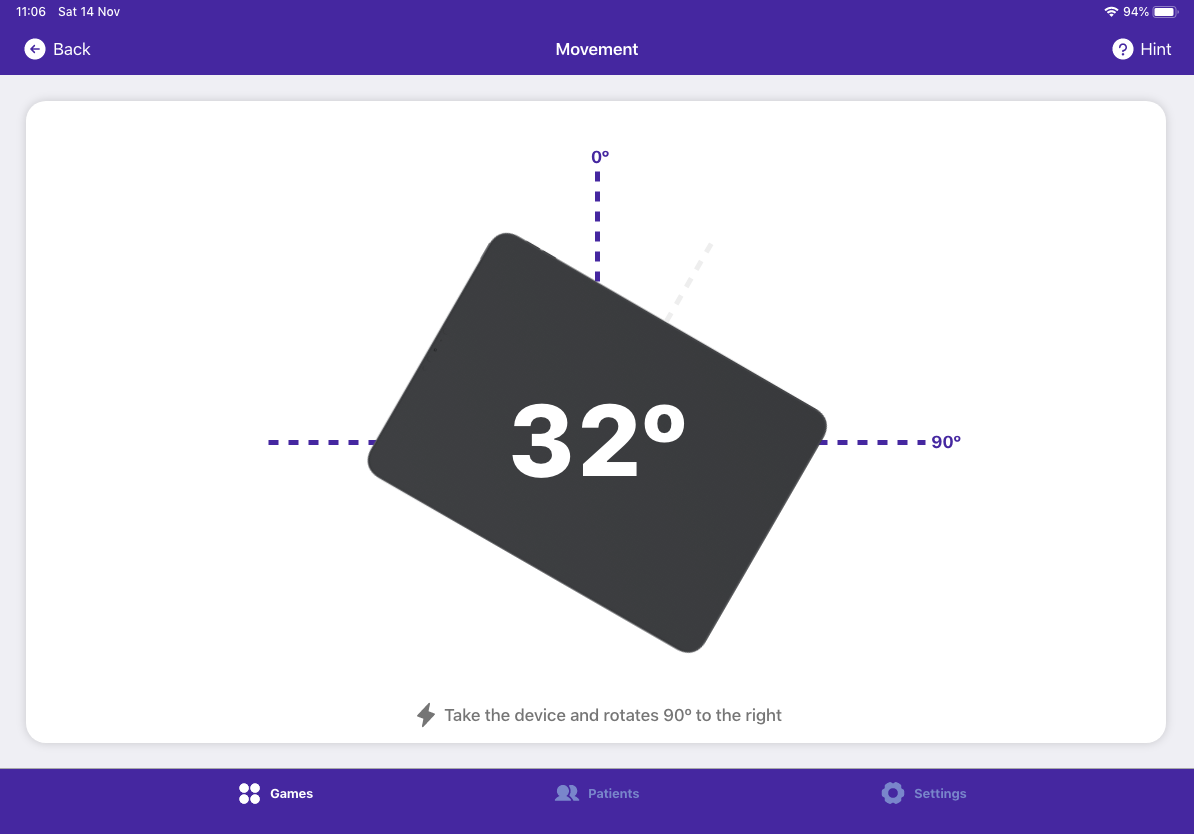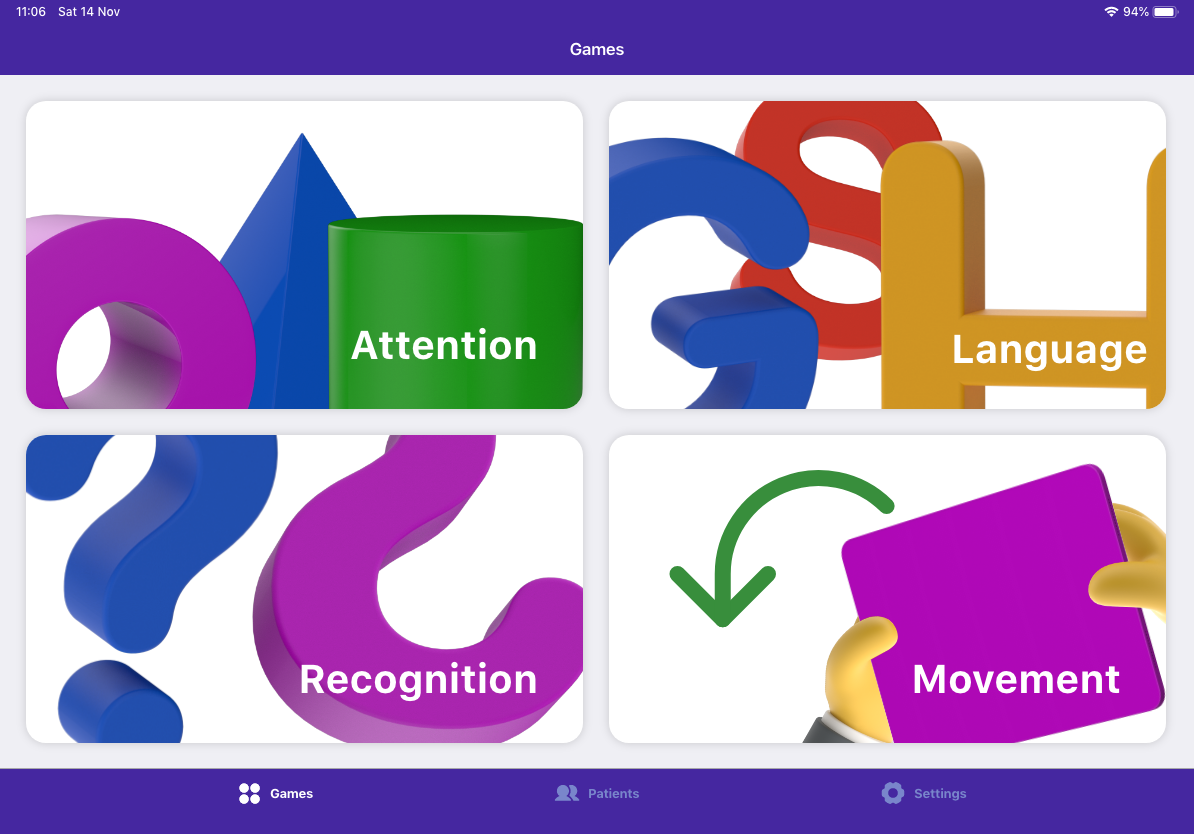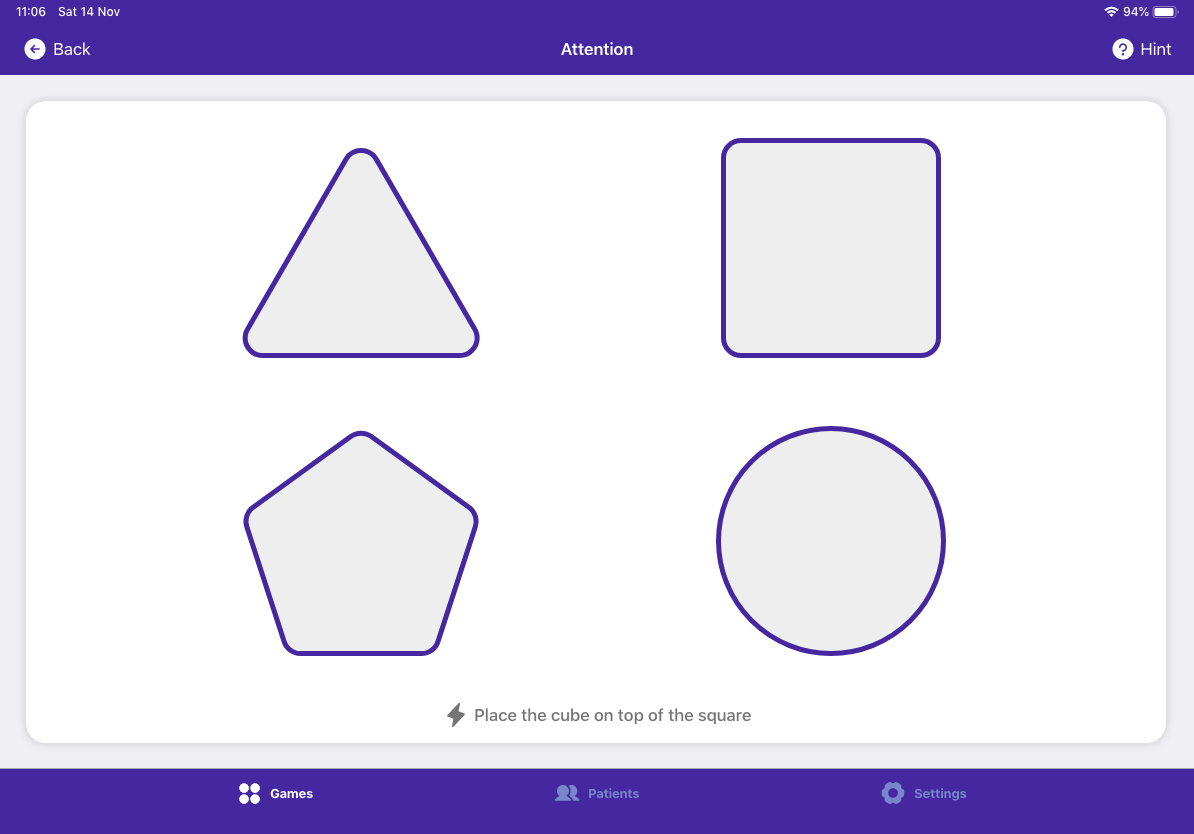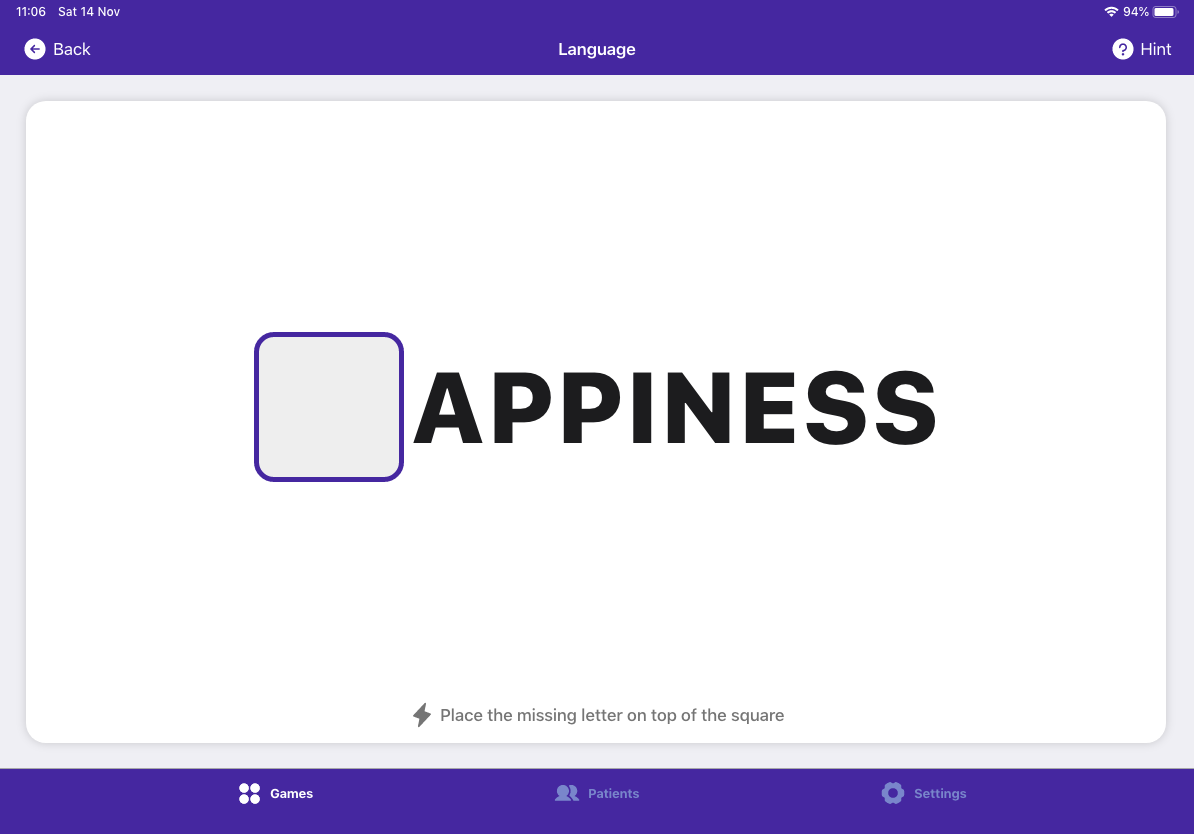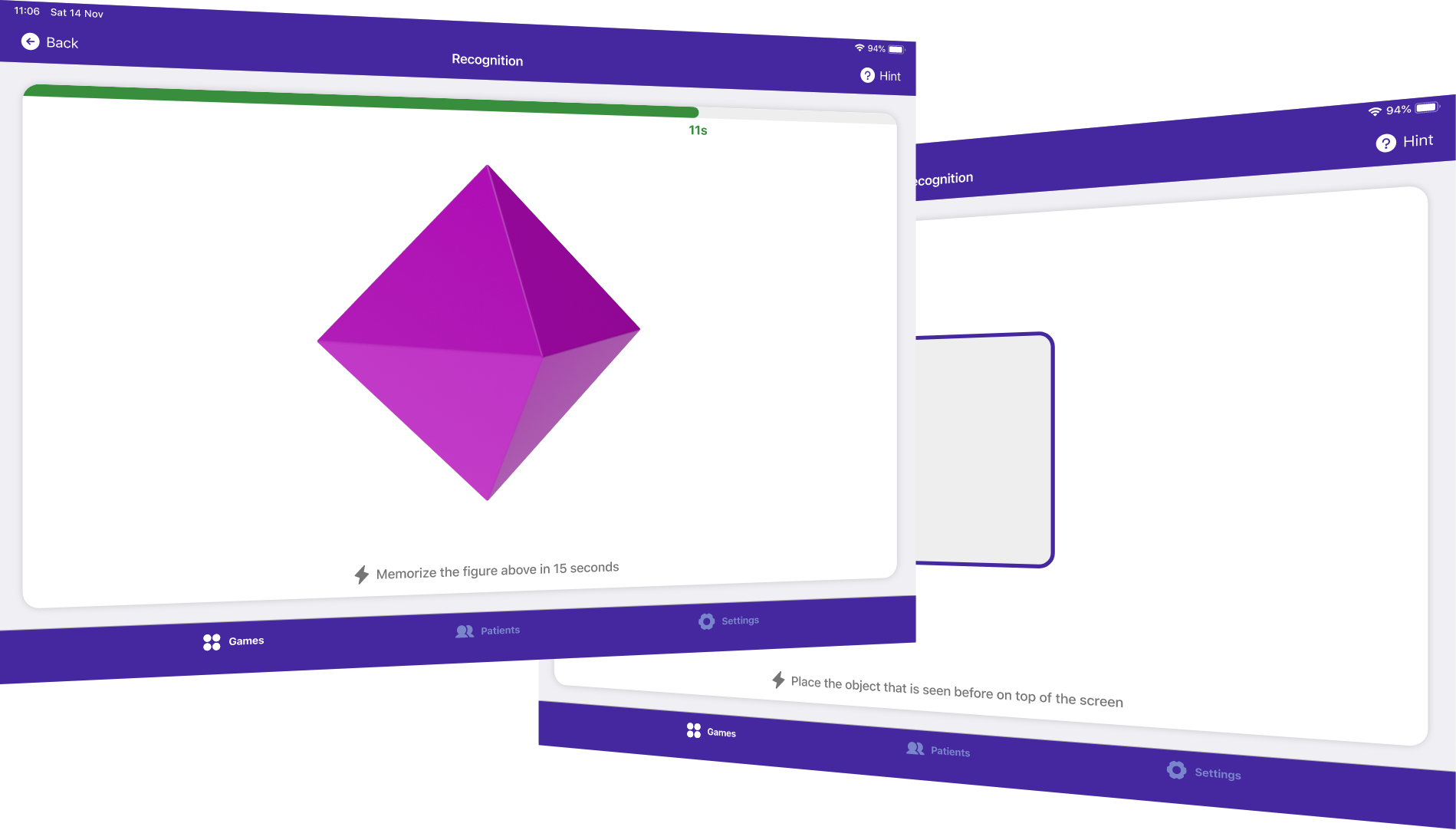- Hackathons
- Feed
- Builders
- Organizations
- Learn
Gallery
Description
Introduction
Rehabilitation is a process that allows the development of lost capacities to enable restitution of functionality in psychological, physical, or social dimensions.
There are three main areas in rehabilitation, namely, respiratory, neurological, and musculoskeletal rehabilitation. It is in the last two that Re·Habilita focuses.
Re·Habilita is a software that has as main objective to serve as a support tool for health professionals to implement a rehabilitation plan. However, it can also be used for the maintenance of home care by the informal caregiver.
To respond to this Hack for Good @ Home challenge, we focused on the "Cognition" topic, more precisely in the dementia theme. Data shows that Portugal is one of the countries with the highest number of cases per thousand inhabitants among OECD countries. About 20 cases per thousand inhabitants suffer from dementia in Portugal, totaling about 205 thousand people. The trend is to increase to 322 thousand patients in the next 15 years.
These data lead us to develop a prototype focused on Alzheimer's Disease that affects so many patients not only in Portugal but worldwide.
Alzheimer's disease is a type of dementia that causes a global, progressive, and irreversible deterioration of several cognitive functions (memory, attention, concentration, language, thinking, among others). This deterioration results in changes in the person's behavior, personality, and functional capacity, making it difficult to carry out their daily activities.
Re·Habilita vs. Seniors
Physical activity improves motor and cardiovascular functions, and exercises that seek to stimulate the mind are fundamental to delaying Alzheimer's disease. It persists without any way of preventing its progress.
We live in times of enormous change, globally, at the environmental, humanitarian, and health levels. In this context, health professionals are called upon to provide the best response to rehabilitation needs. Still, because of the need to reduce the influx to central hospitals, they need to continue with rehabilitation care at home to reduce disability and increase functionality and psychological well-being.
But unlike health professionals, who generally have the technology present in their daily lives, seniors are uncomfortable with new technologies. First, they were not used to dealing with technology. Second, it is usually very different from what they know.
And this is where Re·Habilita differs from other solutions, where we combine the benefits of traditional physical objects with new technologies in a seamless and easy to use way, for everybody.
Tangible User Interface (what?)
The Re·Habilita prototype will be developed to work on the iPad. It will focus on exercises for Alzheimer's patients, aiming to help stimulate some cognitive activities that are degraded with the disease's progression.
According to disease progression stages (mild, moderate, and severe), the software will be divided into three difficulty levels. Each group addresses different exercises. Tangible objects will be used for this interaction between the Alzheimer's patient and the Re·Habilita.
The Tangible User Interface (TUI) paradigm consists of an interface where users can interact with technological devices through a physical object. This can be achieved by simulating the touch of fingers on the screen using passive materials and active modeling circuits on tangible items. The touch surfaces can be combined with physical objects, achieving an interaction covering both the material and the virtual world, with no need for additional sensors or hardware changes for the touch devices to detect the objects.
How does it work?
Alzheimer's disease affects multiple cognitive abilities of the person, and in this prototype of Re·Habilita, we will develop virtual exercises to exercise these abilities, such as attention, language, recognition, and movement, through physical objects.
Attention: exercise that contains several geometric shapes, asking the person to mark where a particular one is (e.g., triangle, square, among others) with the respective (physical) item, place it on the screen in an area designated for the purpose;
Language: the person is asked to complete certain words used daily, just by placing the (physical) piece with the correct letter in the space of the name written on the screen;
Recognition: after viewing a shape on the screen, from among a group of different shapes, identify with the respective (physical) object the shape previously viewed, just placing the item on the screen;
Movement: the person needs to pick up the electronic device and to rotate it left and right, up and down.
The data that comes from the exercises are varied. We can know if it is right or wrong, see the execution time, and the perception of space with the position where the pieces are placed. In the case of movement exercises, we can extract results about neuromotor coordination, proprioceptive capacity, among others. Data that, when crossed, will help to understand the evolution of the disease.
Re·Habilita Business Model
Currently, and in a generalized way in Portugal, the rehabilitation training program and assessment of health/functionality gains are recorded on paper. This kind of record makes it difficult to cross the metrics that allow extracting information to more effectively adapt the rehabilitation plan to the person.
There is a lot of technology present in rehabilitation, and much of it is hardware. Like virtual reality headsets to inspire patients to put more effort into their physical rehabilitation, sensors to perform exercises correctly, and exoskeletons. There is also some software that aims to demonstrate therapeutic exercises, others that try to lower the distance communication barrier between physicians and patients or others where it is possible to keep a rehabilitation plan.
Re·Habilita is a tool designed to support health professionals in implementing a rehabilitation plan. By combining physical objects with new technologies, the patient can use the software in a simple and more familiar way, while performing exercises that will help him in rehabilitation. It can also be used by informal caregivers to continue care at home, creating a feeling of trust and security.
In our view, Re.Habilita is free for personal use in which the informal caregiver/patient has access to all exercises, although they may or may not perform them with the objects. Even in this free version, you will not have access to a history of results, metrics, evolution, and evolution predictions.
For institutions and health professionals, this may have a cost based on a one-time fee where you can have access to the physical objects that will improve the software's experience. Still, also user profiles, history, and metrics of evolution. Although these data may be limited in quantity and time, several price tiers can be explored, including more or less data or more or less history.
These data will become essential for health institutions as they will allow faster customization of treatment over time and more rigorously follow sessions held outside the hospital environment. They will also be important in the scientific context. After being pseudonymized, they can help understand how a particular disease evolves in a patient with a specific profile or which exercises may have more impact in a given context.
Nowadays, the costs of creating capacitive material are not as high as they were ten years ago. Nowadays, you can use different materials to use on any object, from printing with conductive ink, using 3D printing, or even using stickers with specific patterns. These patterns can be added to any item so that they can be identified. The goal will always be to have an object that simulates one or more touches simultaneously on a touch screen. Thus having a pattern and recognizing the item by that same pattern and its position in an X and Y grid that the device gives us.
In some specific pathologies, the numbers show a large percentage of people who need rehabilitation in Portugal. For example, we have about:
15.000 cases of cranioencephalic trauma per year;
25.000 cases of strokes cerebrovascular;
65.000 with musculoskeletal pathology;
36% of the population suffers from chronic pain.
These numbers add up to all the others in the remaining respiratory, neurological, and musculoskeletal rehabilitation areas where Re·Habilita can play a fundamental role in helping health professionals and in the follow-up of rehabilitation at home.
The Team
We believe that we need to have the right people to have a successful project. It is essential to cover the different areas of the project, such as bringing different views to the table. So, who are we?
Gisela Almeida: nurse for over 14 years with a background in intensive care, oncology, surgical care, senior care, and prehospital emergency. With a postgraduate degree in Human Rights from the Faculty of Law of the University of Coimbra and the Faculty of Law of the University of Minho. Currently attending the Postgraduate and Master's Degree in Rehabilitation Nursing at the Nursing School of Coimbra. She is passionate about all the technology applied to sport and health.
Henrique Macedo: a Frontend Developer with a strong motivation to build beautiful user interfaces from the scratch to the final stage, with a focus on design, performance and accessibility. With over ten years of experience and multiple projects to different companies worldwide like NASA, OSRAM, and Mirror. The passion for technology is a constant in their daily lives, always looking for new projects that aim to help others.
Sara Almeida: currently finishing a master's degree in Work and Organizational Psychology and passionate about mental health and organizational sustainability.
The Future
In the future, Re·Habilita may evolve with new exercises like putting an object with a color on the screen or asking him to outline a particular geometric shape with his finger. It is also possible to integrate with Bluetooth devices to support other rehabilitation areas like mobilization exercises for post-surgery or chronic obstructive respiratory disease with respiratory reeducation exercises. We can also take advantage of motor sensors or the TrueDepth Camera already present in some devices to perform facial interpretation and detect, for example, expressions of pain, happiness, or sadness in the reaction to family photos.
When crossed, data will allow visualizing the pathology's progression and the functional gains with the implementation of the rehabilitation plan. With the use of artificial intelligence engines, it may also be possible to predict the evolution of capacities to be developed by the patient in the coming months. Based on these results, the patient, family, or informal caregiver may receive a periodic exercise schedule to stimulate and mitigate the impact of the disease incidence.
